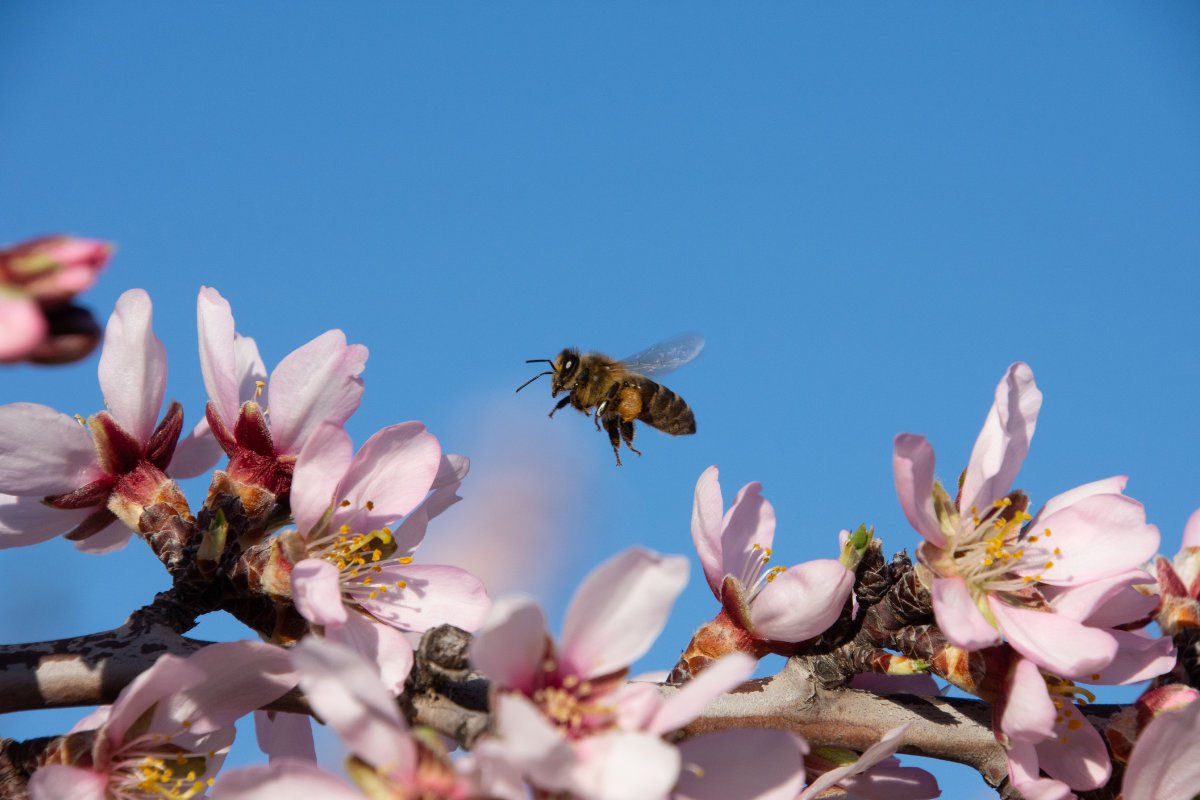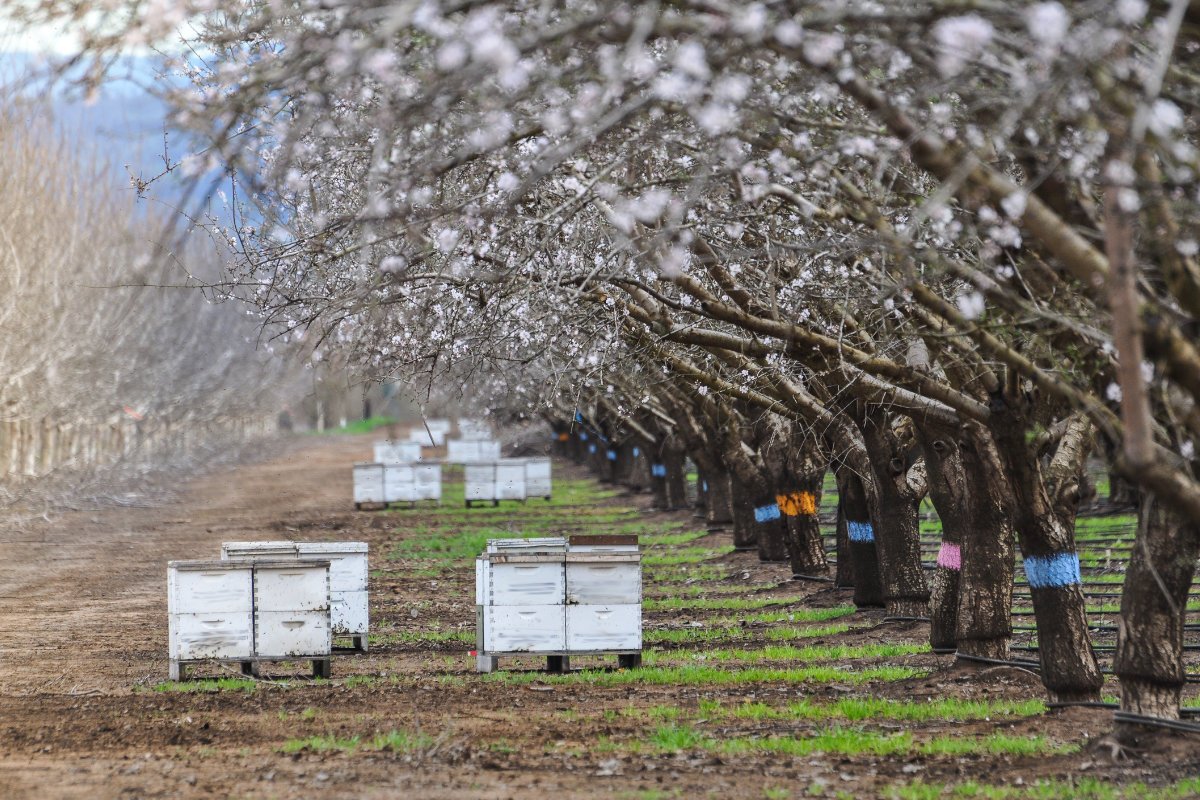A little-known division within the Interior Department is facing elimination, jeopardizing national efforts to protect essential pollinators.

A little-known division within the Interior Department is facing elimination, jeopardizing national efforts to protect essential pollinators.
July 2, 2025

Across North America, bees and other pollinators are essential to healthy ecosystems, but bee researchers fear federal efforts to better understand them are facing potential dismantling. (Getty Images)
Public support for pollinators is nearly ubiquitous. Surveys show that 95 percent of Americans want to protect the bees, butterflies, and other creatures that are essential to ecosystem health and boost crop production, adding billions of dollars in value to U.S. agriculture—especially at a time when pollinator populations are declining. However, the Trump administration is pushing cuts that would make bee research and pollinator conservation slower, more expensive, and far less effective, experts warn.
Expand your understanding of food systems as a Civil Eats member. Enjoy unlimited access to our groundbreaking reporting, engage with experts, and connect with a community of changemakers.
Already a member?
Login
Through proposed layoffs and budget cuts, the administration has taken multiple actions that threaten an obscure division of the U.S. Geological Survey (USGS): the Ecosystems Mission Area, or EMA, which houses almost all federal biological research.
Eliminating the division was prescribed by the Heritage Foundation’s Project 2025 agenda, despite the amount of research EMA provides. The 1,200 biologists and staff who work there document contamination in private and public wells, study the effects of wildfire and drought, and track wildlife disease outbreaks, including avian influenza.
They perform long-term monitoring of native and invasive species from avocets to zebra mussels—enabling management agencies to, for example, set sustainable waterfowl hunting limits, manage livestock predators, and keep waterways healthy. They also inventory, track, or study every known native bee species in the country, along with other pollinators.
Efforts to dismantle federal biological research show “a fundamental misunderstanding of what ecology is and does,” said Lori Ann Burd, environmental health director at the nonprofit Center for Biological Diversity. “I don’t believe Americans voted for the end of being able to gather native blueberries, or for the end of wildflower meadows.”
“I don’t believe Americans voted for the end of being able to gather native blueberries, or for the end of wildflower meadows.”
The White House claims that getting rid of EMA would eliminate duplicative programs and stop federal work on “social agendas” like climate change, while trimming about $300 million from USGS’ $1.6 billion budget. Though unspoken, historical records show the proposal also fits a much older, far-right vision of upholding private property rights by eroding the awareness and protection of imperiled species.
But biologists and conservationists nationwide say these cuts would actually dismantle irreplaceable, largely uncontroversial programs and drive out experts whose work is key not only to the government’s ability to manage natural resources, but also to a broad swath of work led by states and nonprofits.

In 2015, the Obama administration announced measures to protect bees, as beekeepers like Steve Corniffe (above), pictured at the time in Homestead, Florida, grappled with colony declines. (Photo: Joe Raedle/Getty Images)
Importantly, dismantling EMA would mean the elimination of the USGS Bee Lab—a tiny, two-person office in Maryland that is a linchpin for the study and protection of all U.S. native bees. “Every bee researcher, possibly every pollinator researcher in the U.S. has at some point worked with the USGS Bee Lab,” said Rosemary Malfi, the conservation policy director at the nonprofit Xerces Society for Invertebrate Conservation.
With a vast collection of high-resolution photographs, more than 700,000 specimens, and the unrivaled expertise of the lab’s director, biologist Sam Droege, the lab is the only U.S. entity with the resources to identify the nation’s more than 4,000 native bee species. Distinguishing different bees can be exceptionally difficult—but is essential for understanding their health, distribution, and needs.
This makes their work as important for preventing needless endangered-species petitions for bees that are simply hard to find, as it is for protecting the genuinely at-risk ones, Droege told Civil Eats. A federal biologist since 1978, Droege has risked his job to speak in defense of EMA.
“There’s a lot of inappropriately analyzed data out there saying there’s a bee apocalypse, that all bees are declining, but it’s more nuanced than that,” he said. “Wouldn’t you want someone to point that out that has scientific credibility? That’s what we do.”
In recent weeks, Droege has drummed up vocal support for the lab, and hundreds of biologists, volunteers, and partners have written to Congress on their behalf. “But in general, scientists—we’re just doing our job. We’re a little invisible,” he said.
Outside the Bee Lab are many other EMA scientists who could also be fired: Experts like Tabitha Graves, a Montana ecologist whose assessments of the Western bumblebee have become the framework for that species’ recovery in the Pacific Northwest or Wayne Thogmartin, a Wisconsin ecologist whose research on monarch butterflies has been internationally important for understanding their decline.
State agencies, federal resource managers, and nonprofits all rely on EMA’s centralized, consistent, and freely accessible data and guidance, which they say minimizes collective costs and effort.
States aren’t well-equipped to study creatures like bees, which don’t heed their borders, nor to ensure their work harmonizes with that of other states. The U.S. Fish and Wildlife Service, which manages protected species, isn’t funded to track all the other species—that’s EMA’s purview. Universities, though full of biologists exploring novel research questions, don’t usually do long-term monitoring. And there are few experts like Droege for any of these groups to hire if they need help.
So without the federal bee research division, “we cannot understand how pollinators are doing,” said Malfi at the Xerces Society—nor how to protect these creatures, without which North American ecosystems and crops (among them blueberries, tomatoes, and squash) would collapse.

Bees are essential to agriculture, including California’s almond industry (above). Researchers at Ecosystems Mission Area say they need to be monitored by the federal government, because pollinators migrate across state lines and international borders. (Getty Images)
In recent weeks, EMA and its research has faced at least five existential threats: two from the Supreme Court and several from congressional budget processes. If any one of them succeeds, EMA could disappear before the end of the year. Most imminently, President Donald Trump has asked the Supreme Court to allow mass layoffs without congressional approval, seeking to fire more than 100,000 federal workers, including reportedly up to 80 percent of EMA staff.
These reduction-in-force (RIF) layoffs have been paused since May by a District Court injunction, which a federal appeals court has so far upheld. Trump’s emergency appeal to the highest court put it on their “shadow docket,” so although justices are now in recess until October, they could rule on it at any time.
Last week, the Supreme Court did rule on a seemingly unrelated case that nonetheless posed a sideways threat to EMA: Federal workers feared that when the court decided to limit nationwide injunctions, it would also undo the RIF injunction that has so far protected their jobs. To their relief, a footnote in the ruling likely blocked its application to this case.
Trump has also asked Congress to drastically cut EMA funding from USGS appropriations, proposing just $29 million for unspecified EMA programs in his 2026 budget request. But appropriations bills require 60 votes to clear the Senate, and tie individual legislators to unpopular cuts. In Trump’s first term, Congress rejected his attempts to gut science agencies, but amid this year’s funding fights, many biologists fear that legislators will not prioritize natural resources.
Trump has also asked Congress to drastically cut EMA funding from USGS appropriations, proposing just $29 million for unspecified EMA programs.
A second threat in Congress may not require any votes at all: In a recent House briefing, Interior Secretary Doug Burgum indicated the administration will send a budget rescission request to Congress later this summer, asking them to claw back a portion of the Interior Department’s 2025 budget, which still has not formally been allocated.
A rescission only needs a simple Senate majority—but if the request comes within 45 days of the fiscal year end (the window legislators have to take up a proposal), Congress could effectively cancel funding without ever needing to vote, since the paused money wouldn’t roll into the new fiscal year. The legally untested move, called a pocket rescission, would free individuals from blame—though it would almost certainly face lawsuits.
One other threat to federal biologists and other workers has so far been neutralized. In June, senators added a provision to Trump’s “Big, Beautiful Bill” that would have given his administration the power to downsize the federal workforce “without obstruction” from Congress or the courts.
If included in this budget reconciliation bill, it would have allowed the administration to implement RIF layoffs without approval from the Supreme Court. But the Senate parliamentarian has ruled that this and numerous other provisions violated Senate rules, so struck them from the bill.
While federal biologists have survived these attempts so far, they underscore the precarity bee research is facing. Many fear the division’s demise is imminent, especially if Congress doesn’t decide its fate through the appropriations process. So while conservation groups and supporters rally behind these scientists, Droege has been gauging other ways to preserve the lab’s collections, which form the foundation of all U.S. bee taxonomy.
The Smithsonian would probably take the lab’s hundreds of thousands of identified specimens, he said, but likely couldn’t provide the hands-on support the lab does. They also wouldn’t take the up to 200,000 specimens that haven’t yet been identified. As a last resort, Droege said, he’d move these to his own home and establish a private lab; at 66, he had no plans to retire, anyway.
“My motivation is not saving my job,” he said. “My motivation is the bees.” With continued study and science-based protection, he added, “it’s not that difficult to keep them around.”

July 30, 2025
From Oklahoma to D.C., a food activist works to ensure that communities can protect their food systems and their future.
I saw few bees last summer. Lots of wasps dining at the hummer feeder. Not meat bees, as we call them, but small, black wasps that would chase the hummers off. I left them alone (I'm not afraid of insects), thinking they, too, were pollinators. But they were not interested in my tomatoes, peppers, eggplants, or herbs.
I saw several bumblebees, but no honeybees. Not one.
Farmers in the Valley should be raising hell about this.
Thanks for being here.